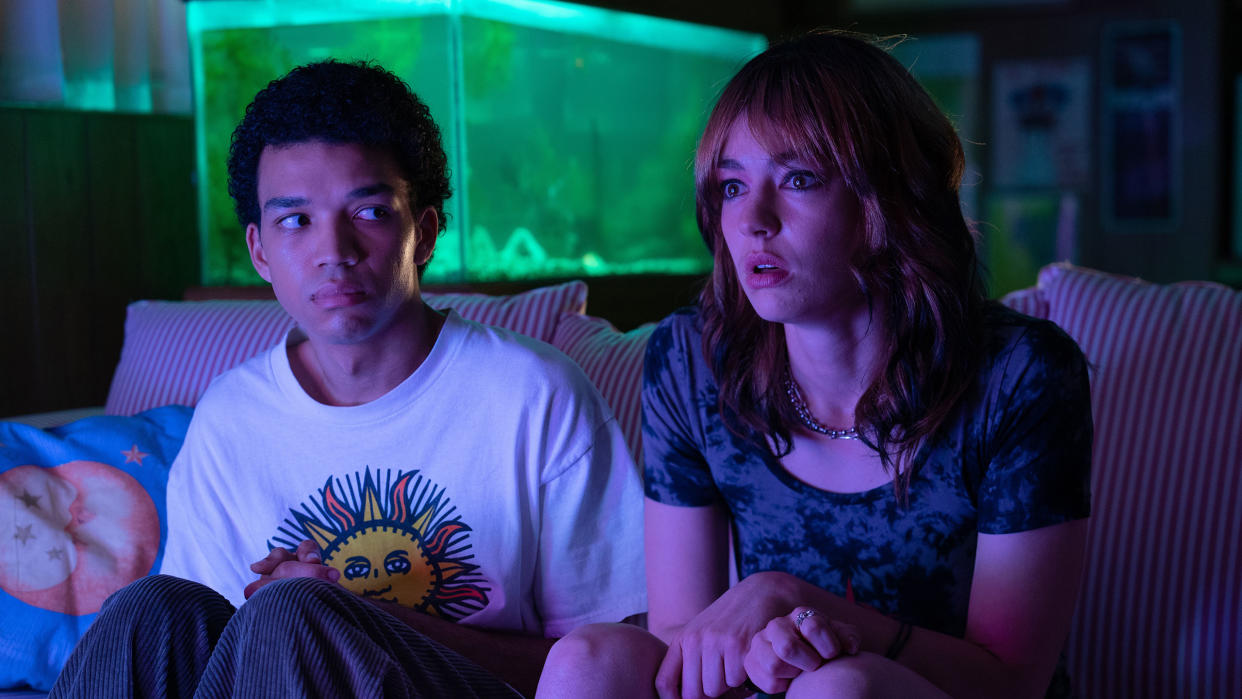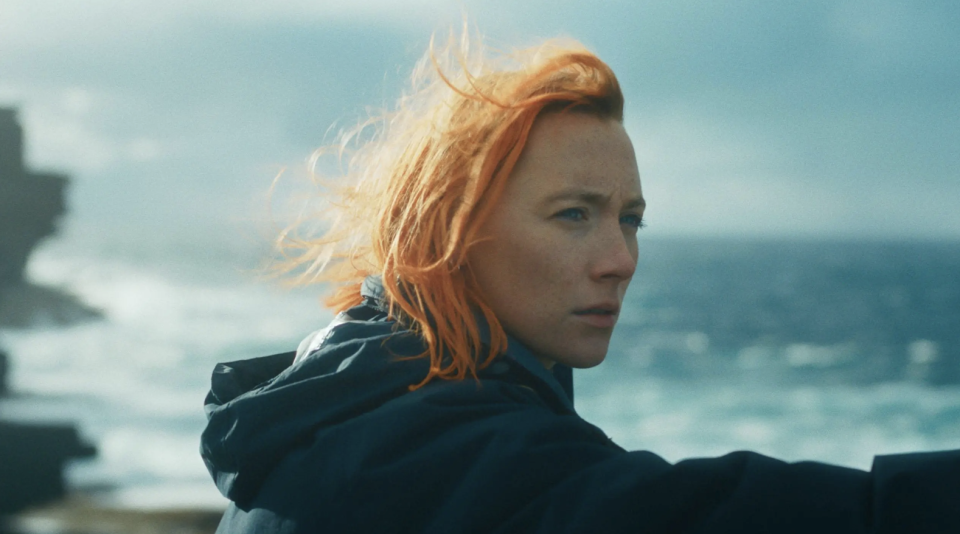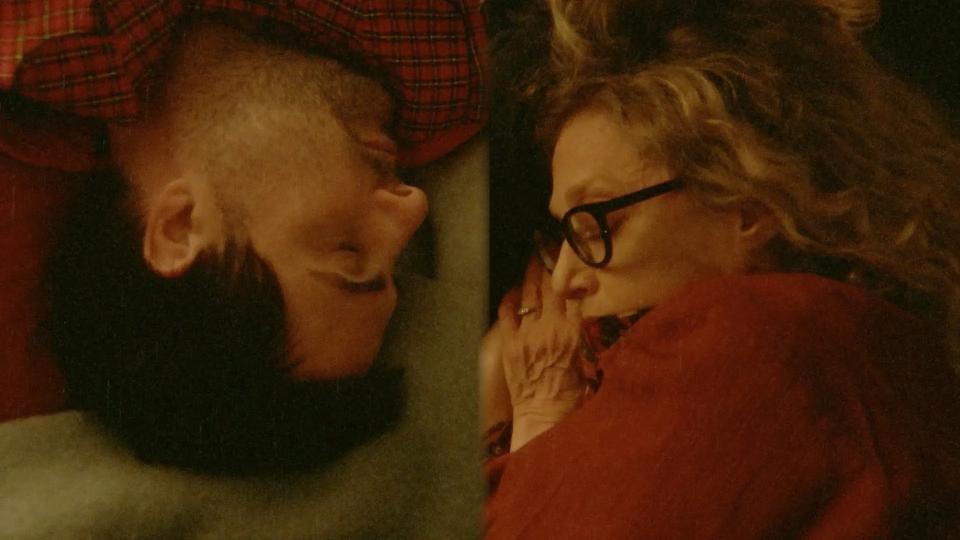Critic’s Notebook: 2024 Was the Year that Sundance Came Back to Life

There are a few silver linings of covering Sundance remotely, which — as a critic with two young children and a marriage that I would still like to have at the end of the month — I elected to do for the fourth consecutive year. You don’t have to wait in lines, sit through the same ads about “the power of storytelling” before every screening, or stare longingly at nearby ski slopes as you take a deep breath and head into a high school auditorium to watch a documentary that will be on Netflix three days later.
More significantly, “doing Sundance” from the relative comforts of Eric Adams’ New York City has a way of unburdening the films you watch from the pressure forced upon them in Park City, where each premiere is attended by some of the most generous audiences on the planet…and also the unreasonable expectation that what they’re about to see might have the power to undo more than a decade of profound damage to the infrastructure of independent film, which no longer seems capable of supporting the same creativity that it exists to cultivate.
More from IndieWire
Where to Watch This Week's New Movies, Including 'Argylle' and 'How to Have Sex'
'Orion and the Dark' Designed Its Animation Around Charlie Kaufman's 'Whimsy and Humor'
Ironically, Sundance also tends to be the most freeing reprieve from that reality, as it invites you to spend a week or more inside a corporate-sponsored snow globe where independent film is the only thing that matters and every screening feels like the center of the world.
So it’s a double-edged sword, really: Watching “The Outrun” with a handful of other critics in a Manhattan screening room can’t hope to compete with the electricity of being at the Library as the movie properly comes to life for the first time, but separating a rugged Saoirse Ronan drama from Oscar-pilled instant reactions and the demands of a $10 million sale at least allows it to exist on its own terms — for better or worse.
On the one hand, it’s just a movie. On the other hand, festivals are so crucial to the morale and self-worth of the film industry because they allow movies to feel like so much more.
Of course, none of this has any bearing on a critic’s feelings about a particular title (most of us are too busy questioning our life choices to be impressed by the pomp and circumstance of a glitzy premiere), but it all speaks to the difference between going to Sundance and seeing much of its lineup at local screenings and/or on the virtual platform.
Was I “doing Sundance,” or was I just binge-watching a bunch of the movies that were playing there?

The difference between the two was thrown into much sharper relief this year than it was during the last three, as IndieWire founder and first-time Sundance Festival Director Eugene Hernandez made a clear and welcome effort to nudge the festival away from the hybrid event that it became in order to survive the pandemic. All of the competition films were still available for people to stream from around the world (a requirement of their inclusion in the lineup), along with a mixed bag of stuff from the other categories, but not until the tail-end of the schedule, when it was clear that virtual attendees were being served the table scraps of the feast they’d been savoring from afar over for the previous seven days.
While Midnight sensations like “Presence” and Day One standouts like “Ghostlight” were reserved for in-person audiences, I was able to watch Jesse Eisenberg’s much buzzed-about “A Real Pain” on my couch before it formally becomes Searchlight property. And though I found much to enjoy in that wry two-hander about a pair of estranged cousins forced to reconcile personal and shared wounds on a Holocaust tour of Poland, it continued the unfortunate tradition of Sundance movies that feel all too at home on TV.
In that light, I was amused to find that the two more formally inventive of the films I streamed on the platform — the documentaries “Ibelin” and “Seeking Mavis Beacon,” both about the real-life reverberations caused by characters from computer games — centered on even smaller screens, and might have been more immersive on my laptop than they were at the Library.
It’s obviously much easier for me to say this because of the privileged access my job requires, but the balance that Hernandez and his team struck with this year’s festival seems like a sustainable way of widening the tent while still emphasizing the primacy of the Park City experience.
From where I was sitting some 2,500 miles away from the action, this was the first time since the start of the pandemic that Sundance felt like more than the sum of the movies playing there. Despite the fact that I wasn’t there to experience it for myself, this seemed to me like the first time since COVID that the festival seemed faintly alive, and not merely undead — if only because the most exciting films in this year’s lineup were preoccupied with the difference between those two states of being.

Formed in the vacuum of my own remote viewing, my vague impressions probably don’t mean a damn thing for the economic future of independent cinema or the role that Sundance will play in it. And yet, I was and remain struck by how much of what I saw — and felt worth remembering — from this year’s festival was defined by the post-mortem fight to liberate oneself from the past lives that are holding them back. Some of these movies played on that idea more literally than others, but all of them reflected the festival’s ongoing struggle to escape the shadow of its former identity and redefine itself on its own terms.
Some told stories (ugh, not stories) about people who find a way forward by summoning the courage to embrace a tomorrow that would’ve seemed unrecognizable to yesterday; Angela Patton and Natalie Rae’s heart-wrenching documentary “Daughters,” about a father-daughter dance for Black girls whose fathers are in prison, is but one example of many. Others, like Aaron Schimberg’s acidly brilliant “A Different Man” and Sam and Andy Zuchero’s playful but exasperating “Love Me,” locked in on characters — both human and buoy alike — who suffer for their stubborn attachment to fantasies of self-imagination.
“Love Me” wasn’t the only film that used A.I. as a conduit to explore the possibility of life after death, or even the only one that had “Love” in its title; the stultifyingly conventional “Love Machina” chronicles Martine Rothblatt and Bina Aspen’s efforts to achieve immortality through machine learning, while Hans Block and Moritz Riesewieck’s documentary “Eternal You” unpacks how people are already doing just that.
But nothing I saw crystallized this recurring theme more literally than Thea Hvistendahl’s undercooked zombie drama “Handling the Undead,” a Norwegian slow-burn in which a grieving woman played by Renate Reinsve tries to preserve her half-rotted son after every corpse in Oslo comes “back to life.” Not a single frame of this moribund film does anything to suggest that things will end well.
Other fare offered a bit more hope for transformation, rebirth, and/or the strength to stay alive. Perhaps it should come as no surprise that the single best film I saw “at” Sundance was the one that tied those separate aspirations into an inextricable knot. An urgent and harrowingly beautiful follow-up to 2021’s “We’re All Going to the World’s Fare,” “I Saw the TV Glow” found writer-director Jane Schoenbrun extrapolating their own experience with dysphoria and hormone therapy into a trans phantasmagoria about two queer teens who become unmoored by the cancellation of their favorite television show.
It’s a movie whose impact and specificity is admittedly belittled by my framing of it as a metaphor for the festival where it premiered, but “I Saw the TV Glow” is the kind of overnight landmark that has the power to warp the space-time of meaning around its sudden arrival. Glib as this might sound to those who’ve seen it, I can’t help but think it fitting that the film of Sundance 2024 so vividly articulated the life-or-death stakes of self-recognition, and the courage required to embrace the full truth of an evolving identity.

Some of the other standouts from this year’s festival tackled a similar conflict in more conventional terms. I’ve already alluded to Nora Fingscheidt’s “The Outrun,” an affectingly elemental drama that follows an alcoholic Saoirse Ronan from the EDM clubs of Hackney to the windswept shoals of the Orkney Islands as she makes a desperate bid to dry out her demons and become one with the land. I loved Nathan Silver’s wry and jagged “Between the Temples,” about a recently widowed cantor played by Jason Schwartzman, for how it complicated the rhythms of a typical grief comedy with the dissonant energy of a Jew pursuing happiness; for all of its emphasis on tradition, here was another film that rejected the shofar’s song of restoring the past in favor of stepping into a bold and uncertain future.
If only the Zellner brothers’ singularly hilarious and surprisingly poignant “Sasquatch Sunset” offered its even hairier characters the same choice. A wordless, anthropological saga about a family of missing links who might just be the last of their kind (Jesse Eisenberg and Riley Keough are as compelling as they are unrecognizable), the latest film by the team behind “Kumiko, the Treasure Hunter” starts off as a pungent romp full of poop-throwing and sasquatch sex, but things take a more despairing turn as it becomes clear that these noble creatures may not be adaptive enough to survive the winter. Evolution is necessary, but it’s not for everyone.
Will Sundance fare any better? Collectively, these movies forced me to ask the exact same question that I had the luxury of not having to ask any of them in return. And the more of them I watched, the less clear the situation became. Few of the films I saw matched the emotional heft and/or artistic vitality of recent premieres like “Passages,” “Past Lives,” and “Kokomo City.” Alessandra Lacorazza Samudio’s Grand Jury Prize-winning “In the Summers,” a lovely coming-of-age drama that draws considerable power from the compression of time (while also suffering from the lack of it), paled next to the sweep and magnitude of last year’s champion, “A Thousand and One” — a comparison that only seems worth making because it reflects how the prototypical Sundance movie has come to embody the increasingly small impact they have on the world.

Aside from “The Outrun,” one of the only narrative features I saw that ran longer than 93 or 100 minutes was Haley Elizabeth Anderson’s scrappily evocative “Tendaberry,” a Coney Island-set character study about a young woman struggling for equilibrium after her boyfriend flies to Ukraine in order to visit his sick father (the “movies need to be shorter” people may have lost at the multiplex, but they’ve been winning where it matters for a long time now). Anderson’s NEXT entry never quite makes a virtue of its meandering, diaristic flow, but I adored it for its willingness to try.
Running time is obviously just a statistic, no more determinative of a film’s quality than the camera on which it was shot, but it’s hard to overstate how refreshing — how finally, some real fucking FOOD — it can feel to watch someone shoot for the moon after sitting through so many safe, heartfelt, labbed-to-death coming-of-age movies that often seem as if they were made in order to serve the appetites of a festival that can’t afford to get so comfortable in its taste. Unless those movies are as sharp and nuanced as India Donaldson’s “Good One,” even the ones that take you on a wild ride manage to leave the impression of a culture standing in place.
“Daughters” was one of the first titles I saw from this year’s lineup, but a line from it lingered in my ears for the entire fest: “If you don’t define yourself, the world will define you.” Sundance is still alive and kicking, and its future seems brighter now than it has at any point in the last four years.
But surveying the movies that just played there makes one thing perfectly clear: There are fates worse than death, and it can take all of the courage, vision, and self-conviction in the world to avoid them.
Best of IndieWire
Where to Watch This Week's New Movies, Including 'Argylle' and 'How to Have Sex'
Christopher Nolan's Favorite Movies: 40 Films the Director Wants You to See
Sign up for Indiewire's Newsletter. For the latest news, follow us on Facebook, Twitter, and Instagram.
